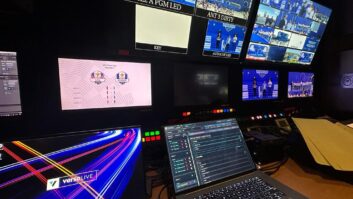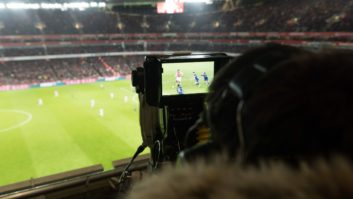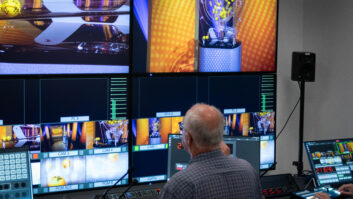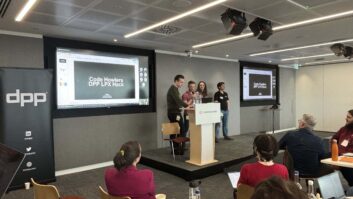From Glastonbury to Glyndebourne, putting live music on television is challenging. TV doesn’t lend itself naturally to music events – it always looks great but getting the audio right, for everyone, can be very hard work.
The University of Surrey, home to the famous Music and Sound Recording (Tonmeister) audio degree course, has produced some of the world’s top BAFTA, Emmy and Oscar winning sound engineers. Earlier this month, Royal Television Society (RTS) members and guests were welcomed by Russell Mason, programme director for the Tonmeister course and Rupert Flindt, lecturer in recording techniques, to enjoy an informative and entertaining discussion with engineers Mike Hatch, Mike Felton and Tudor Davies.
Their TV credits include Later… with Jools Holland, Eurovision, The Brit Awards, and Top of the Pops, not to mention the huge and iconic live events Glastonbury, BBC Proms in the Park, and touring with the band Simple Minds.
Speaking with guests as they arrived, there was an excitement in the air to learn about the complex art of audio for television, which is renowned for being difficult to get to grips with, given the many demands of running a live event.
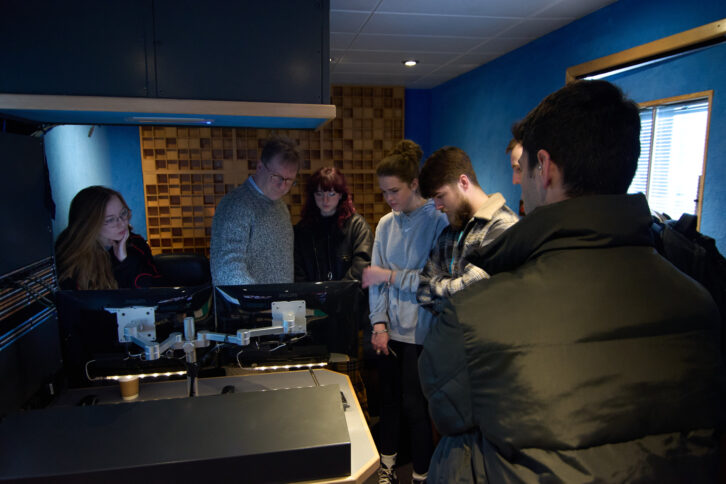
How do you prepare for live music on television with multiple bands coming on stage sequentially or already there waiting their turn? Logistics and detailed planning are major factors because you simply can’t predict what will happen on-location. Are we a guest here, fitting in with someone else’s plan or are we in charge? Being in charge and the trust placed in your art as a sound engineer is rewarding and brings more freedom but it can be a lonely place. As in much of television, relationship-building is key.
Microphones get in the way of the cameras or lights. Cables can be a mess and get in the way of camera operators and artists. Live audiences are wonderful on camera and the director usually wants more cheering, clapping and buzz from the audience while the audio team are tearing their hair out to manage sound levels, amplification for the audience, foldback for musicians, clean feeds for external use and, of course, an amazing sound for us all to enjoy at home.
Among the many and wide-ranging problems faced at major live events such as Glastonbury is that the overall volume can be absolutely deafening and the spill nearly impossible to manage. A familiar scenario might be trying to manage spill from the drums over gentle strings while at the speaker stack is positioned to drown even the drums! There’s the band that refuses to move to in-ear monitors and insists on cranking up the foldback volume on stage – perhaps to compete with the spill from another stage not far away. It’s a constant battle to achieve a crisp sound and then maintain it, always riding the faders and manipulating many different areas to manage a dynamic situation.
In live classical music recording the spill can often be part of the mix but classical music for television can face quite different challenges. It’s not uncommon to have a plan only to turn up on site and ditch it completely because someone has decided to position a dance set in the middle of the orchestra. However much you plan you generally have to make it work when you get on site. The key is to first understand what is to be achieved, who the target audience is and then work back from there while working out what good and bad things need to be taken care of from an audio point of view. At the Coronation, there were more than 190 microphones placed throughout and each one has to be carefully considered for not only the sonic quality but visual position to camera and congregation – and spill.
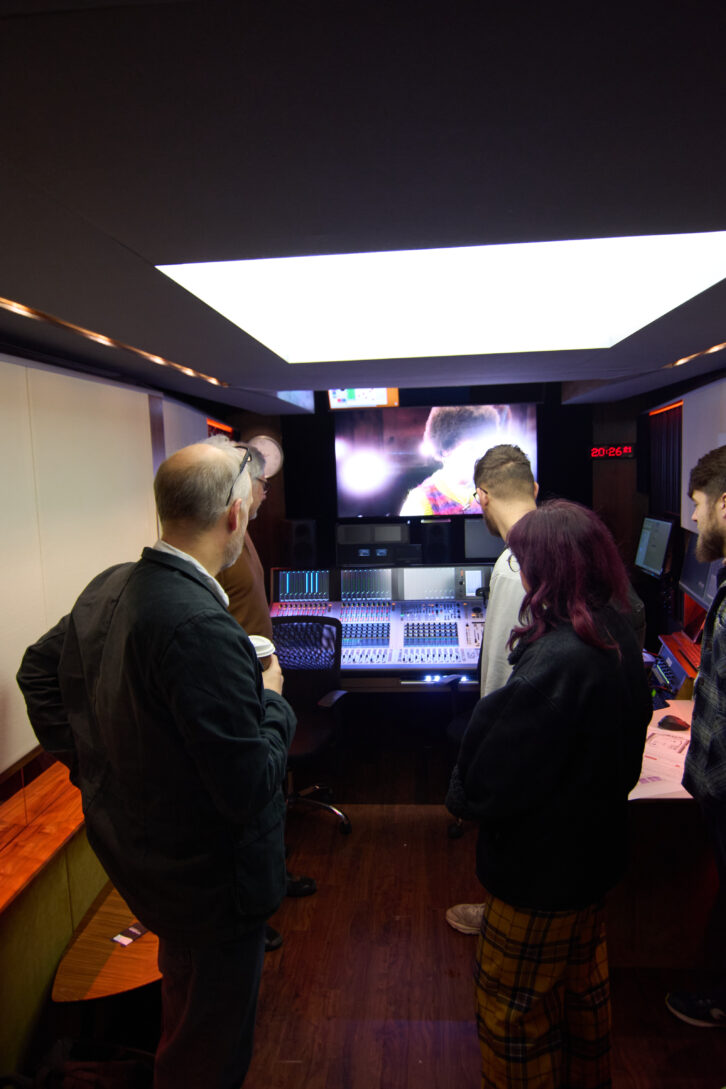
How does one choose the right microphone? There’s often a feeling that the same old mics are used for years and without innovation getting through. As with relationships in any live location recording, trust is the element that can maintain a status quo; if an engineer prefers a mic because they know the exact sound they’re looking to achieve and have a trusted mic that delivers it, then that’s simply what will be used. The old phrase “this is not a rehearsal” becomes real with live production – there’s no second chance and the sound engineer looks for surety as well as sonic pureness.
Speaking about the RTS event, Flindt said: “Members and students engaged the sound engineers on various topics, including recording 5.1 surround sound for stereo home delivery, producing surround sound for TikTok, and maintaining uncorrupted metadata. They also explored the realities of limited rehearsal times and handling microphone failures during live performances.
“This experience will undoubtedly be memorable for our students, significantly aiding their career development,” he added.
Also discussed was, how much (or little) rehearsal time is given (sometimes seconds!) for a live performance, and how to cope when a mic goes down – it’s not like simply switching to another camera!
The event was preceded by guided tours and live demonstrations of the Floating Earth OB truck, hosted by Mike Hatch and the Mixbus OB truck hosted by Conrad Fletcher, Tudor Davies and Mike Felton.
